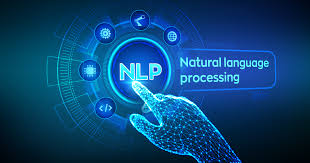| I PRELIMINARIES
1. Introduction
- What Is Business Analytics?
- What Is Machine Learning?
- Machine Learning, AI, and Related Terms 5
- Big Data
- Data Science
- Why Are There So Many Different Methods?
- Terminology and Notation
- Road Maps to This Book
- Using RapidMiner Studio
2.Overview of the Machine Learning Process
- Introduction
- Core Ideas in Machine Learning
- The Steps in a Machine Learning Project
- Preliminary Steps
- Predictive Power and Overfitting
- Building a Predictive Model with RapidMiner
- Using RapidMiner for Machine Learning
- Automating Machine Learning Solutions
- Ethical Practice in Machine Learning
II DATA EXPLORATION AND DIMENSION REDUCTION
3. Data Visualization
- Introduction
- Data Examples
- Basic Charts: Bar Charts, Line Charts, and Scatter Plots
- Multidimensional Visualization
- Specialized Visualizations
- Summary: Major Visualizations and Operations, by Machine Learning Goal
4. Dimension Reduction
- Introduction
- Curse of Dimensionality
- Practical Considerations
- Data Summaries
- Correlation Analysis
- Reducing the Number of Categories in Categorical Attributes
- Converting a Categorical Attribute to a Numerical Attribute
- Principal Component Analysis
- Dimension Reduction Using Regression Models
- Dimension Reduction Using Classification and Regression Trees
III PERFORMANCE EVALUATION
5. Evaluating Predictive Performance
- Introduction
- Evaluating Predictive Performance
- Judging Classifier Performance
- Judging Ranking Performance
- Oversampling
IV PREDICTION AND CLASSIFICATION METHODS
6. Multiple Linear Regression
- Introduction
- Explanatory vs. Predictive Modelling
- Estimating the Regression Equation and Prediction
- Variable Selection in Linear Regression
7. k-Nearest Neighbour’s (k-NN)
The k-NN Classifier (Categorical Label)
- k-NN for a Numerical Label
- Advantages and Shortcomings of k-NN Algorithms
8. The Naïve Bayes Classifier
- Introduction
- Applying the Full (Exact) Bayesian Classifier
- Solution: Naïve Bayes
- Advantages and Shortcomings of the Naïve Bayes Classifier
9. Classification and Regression Trees
- Avoiding Overfitting
- Classification Rules from Trees
- Classification Trees for More Than Two Classes
- Regression Trees
- Improving Prediction: Random Forests and Boosted Trees
- Advantages and Weaknesses of a Tree
10. Logistic Regression
- Introduction
- The Logistic Regression Model
- Example: Acceptance of Personal Loan
- Logistic Regression for Multi-class Classification
- Example of Complete Analysis: Predicting Delayed Flights
11. Neural Networks
- Introduction
- Concept and Structure of a Neural Network
- Fitting a Network to Data
- Required User Input
- Exploring the Relationship Between Predictors and Target Attribute
- Deep Learning
- Advantages and Weaknesses of Neural Networks
12. Discriminant Analysis
- Introduction
- Distance of a Record from a Class
- Fisher’s Linear Classification Functions
- Classification Performance of Discriminant Analysis
- Prior Probabilities
- Unequal Misclassification Costs
- Classifying More Than Two Classes
- Advantages and Weaknesses
13. Generating, Comparing, and Combining Multiple Models
- Automated Machine Learning (Auto ML)
- Explaining Model Predictions
- Ensembles
- Summary
V INTERVENTION AND USER FEEDBACK
14. Interventions: Experiments, Uplift Models, and Reinforcement Learning
- A/B Testing
- Uplift (Persuasion) Modelling
- Reinforcement Learning
- Summary
VI MINING RELATIONSHIPS AMONG RECORDS
15. Association Rules and Collaborative Filtering
- Association Rules
- Collaborative Filtering
- Summary
16. Cluster Analysis
- Introduction
- Measuring Distance Between Two Records
- Measuring Distance Between Two Clusters
- Hierarchical (Agglomerative) Clustering
- Non-Hierarchical Clustering: The k-Means Algorithm
VII FORECASTING TIME SERIES
17. Handling Time Series
- Introduction
- Descriptive vs. Predictive Modelling
- Popular Forecasting Methods in Business
- Time Series Components
- Data Partitioning and Performance Evaluation
18. Regression-Based Forecasting
- A Model with Trend
- A Model with Seasonality
- A Model with Trend and Seasonality
- Autocorrelation and ARIMA Models
19. Smoothing and Deep Learning Methods for Forecasting
- Smoothing Methods: Introduction
- Moving Average
- Simple Exponential Smoothing
- Advanced Exponential Smoothing
- Deep Learning for Forecasting
VIII DATA ANALYTICS
20. Social Network Analytics
- Introduction
- Directed vs. Undirected Networks
- Visualizing and Analysing Networks
- Social Data Metrics and Taxonomy
- Using Network Metrics in Prediction and Classification
- Collecting Social Network Data with RapidMiner
- Advantages and Disadvantages
21. Text Mining
- Introduction
- The Tabular Representation of Text: Term–Document Matrix and “Bag-of-Words’’
- Bag-of-Words vs. Meaning Extraction at Document Level
- Pre-processing the Text
- Implementing Machine Learning Methods
- Example: Online Discussions on Autos and Electronics
- Example: Sentiment Analysis of Movie Reviews
- Summary
22. Responsible Data Science
- Introduction
- Unintentional Harm
- Legal Considerations
- Principles of Responsible Data Science
- A Responsible Data Science Framework
- Documentation Tools
- Example: Applying the RDS Framework to the COMPAS Example
- Summary
IX CASES
23. Cases
- Charles Book Club
- German Credit
- Tayko Software Cataloguer
- Political Persuasion
- Taxi Cancellations
- Segmenting Consumers of Bath Soap
- Direct-Mail Fundraising
- CatLog Cross-Selling
- Time Series Case: Forecasting Public Transportation Demand
- Loan Approval
Conclusion:
This course provided a hands-on introduction to machine learning using RapidMiner, from data preparation to model evaluation. Continue exploring its advanced features to enhance your data science skills and drive actionable insights in your projects.
If you are looking for customized info, Please you can contact us here
Reference
|







Reviews
There are no reviews yet.